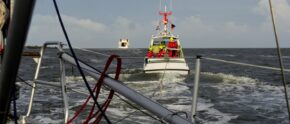Find the right inflatable boat
Most popular boat class
Probably no other type of boat is as widespread as the inflatable boat. The advantages are obvious: from paddle boats, fishing boats, dinghies to highly motorized ribs, the applications are almost unlimited. Inflatable boats are light, flexible, easy to transport and usually cheaper than rigid hull boats made of GRP.
The variety continues in different sizes, designs and variants. Often, therefore, the question arises as to which inflatable boat is best suited to which area of use,
Our inflatable boat guide answers the most important questions.
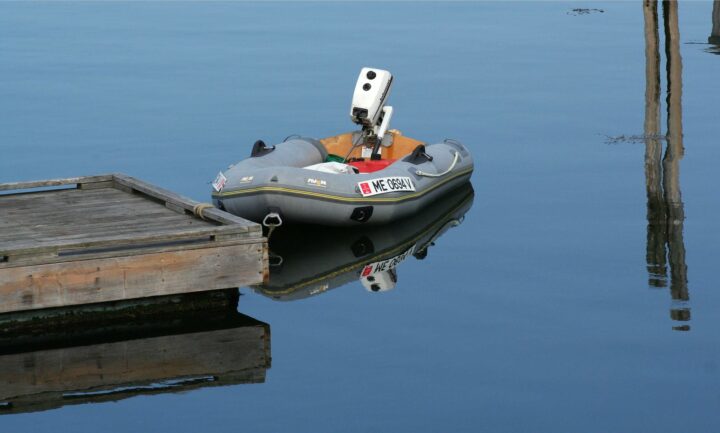
labelling requirement
The same legal regulations apply to inflatable boats as to all other types and designs of boats. Recreational boats with an engine power of more than 2.21 kW (3 hp) and sailboats without an engine over 5.50 m hull length must carry a license plate on all German inland waterways where the Inland Waterways Regulations apply, in accordance with the “Verordnung über die Kennzeichnung von auf Binnenschifffahrtsstraßen verkehrenden Kleinfahrzeugen (KIFzKV-BinSch)”.
The license plate must be clearly legible (light on dark, dark on light) and permanently affixed. The letters must have a minimum height of 10 cm. In principle, the license plates can also be attached to the transom, but in the case of a motorized dinghy, there is not enough space because the engine will always cover the license plate. Therefore, the markings must be placed on the hoses of the fuselage (on both sides). In the trade there are corresponding adhesive letters for PVC inflatable boats.
Inflatable boats with slatted bottom
The simplest and cheapest solution for an inflatable boat is a version with a slatted bottom. In this case, the floor of the inflatable boat is made of PVC, reinforced with removable slats or foldable slatted floor. The advantage: inflatable boats with slatted bottoms are easy to store, are usually supplied with a suitable transport bag. They are lightweight and inexpensive. These boats are suitable, for example, as dinghies on smaller motorboats or sailboats, or as pleasure boats for short trips in protected coastal or inland areas or in anchorage.
After use, they can be easily transported in the back box on board or in the trunk.
The ideal motorization here is usually from 2.5 to 5 hp. Although many models can tolerate a larger engine, the driving stability noticeably decreases at higher speeds.
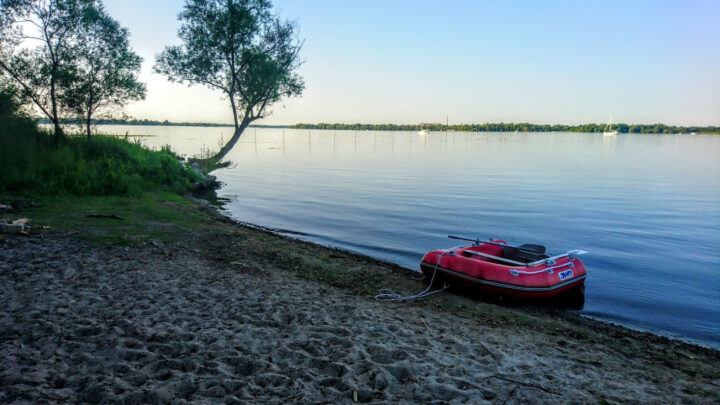 Inflatable boat with slatted bottom
Inflatable boat with slatted bottom Inflatable boats with aluminum bottom
Especially among anglers inflatable boats with insertable aluminum bottoms are very popular. Here, like inflatable boats with battens, the bottom is made of non-inflatable PVC – but is reinforced by plates of aluminum. The bottom becomes more stable and is protected from damage by sharp objects such as fish hooks or knives. The solid bottom leads to greater stability and it is also safe to stand on it. Since the floor consists of several parts, the boats are also easy to store.
Inflatable boats with aluminum bottoms are also well suited as dinghies, in which often a lot is to be transported. The stability is higher than slatted floors and solid objects and pointed can be transported more safely.
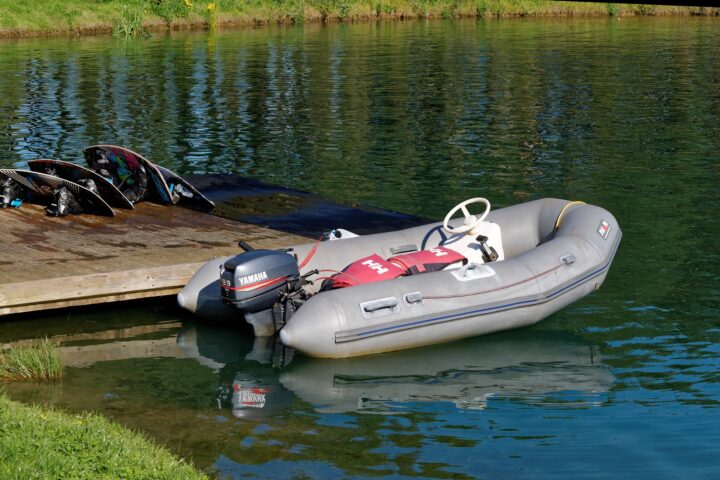
Shoal boats with a solid hull
Rigid hull inflatable boats have a v-shaped hull made of GRP or aluminum. Due to the hull shape and the solid material they have a high stability, a lot of buoyancy and a good course behavior. Thus, rigid hull inflatable boats are also suitable for longer distances at higher speeds. They are used as recreational boats, fishing boats and tenders.
Due to the high stability, motorizations – depending on the manufacturer’s specifications and size – from 5 or 15 hp upwards are possible. Due to the solid bottom and stability, there are numerous variants here – from the simple 3 meter dinghy to larger boats with a fixed helm and superstructure, such as for towing boats for wakeboarding or water skiing. The possibilities are almost unlimited, up to large RIBs (Rigid Inflatable Boat) for the transport of several people or as lifeboats with several hundred horsepower.
Rigid hull inflatable boats are also navigable in offshore areas, which is why they are very often used as dinghies for yachts on long voyages. However, davits are usually required for transportation. For smaller distances, for example from anchorage to anchorage, they can be towed very well because of the high course stability.
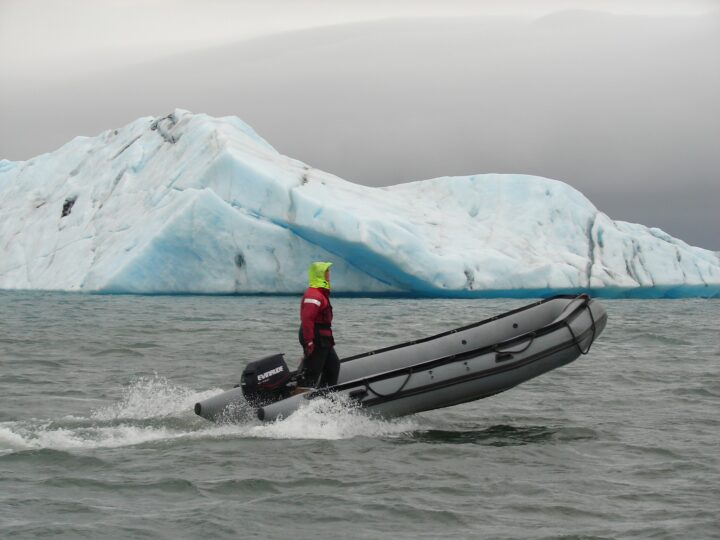
Maintenance, care and repair
Inflatable boats are not considered particularly high maintenance, but there are still some points that should be considered.
- After use and before stowing, the hoses should always be rinsed with clean water and cleaned with a soft cloth. Especially after use in salt water
- Before folding the boat must be completely dry. Moisture can lead to mold growth.
- Avoid excessive and prolonged exposure to sunlight during storage. When transporting on davits tarpaulins are suitable for protection against UV exposure
- In the trade there are special PVC care products that keep the material supple
Check for leaks before each use. In case of prolonged non-use, a thorough leakage test should be carried out. Over time, the plasticizers in the material can lose their effect and the hoses can become brittle and cracked.
Cracks, holes and damage can be patched with repair kits. In any case, the appropriate repair materials should be used – follow manufacturer’s instructions. For on the road, there are also adhesive-free repair kits in the accessories trade. A repair kit should always be on board, as well as a pump.
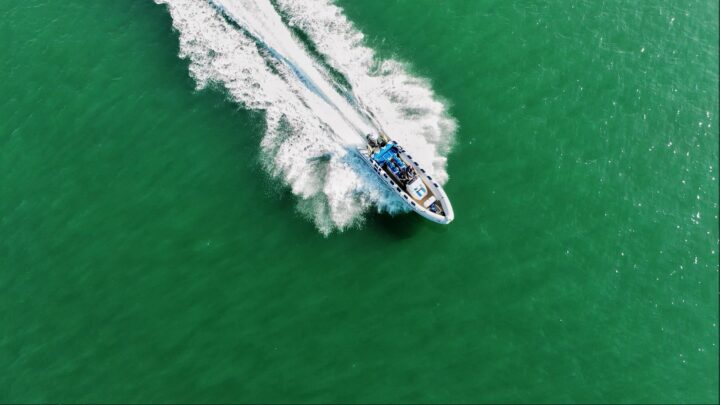
FAQs
- What does “RIB” mean?
RIB is the abbreviation of Rigid Inflatable Boat.
- Which outboard for a dinghy?
How powerful the engine should be depends on the size, the type, the area and the manufacturer’s specifications. Read our guide on this here.
- What does dinghy mean?
Dinghy, also spelled dinghy or dinghy, is the English name for a small boat that can be operated by one person. Originally, the term comes from India.

